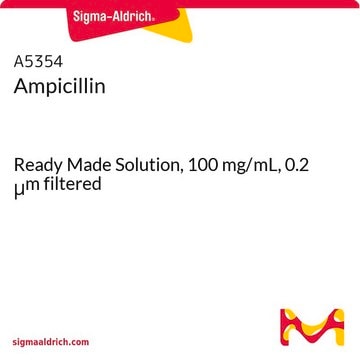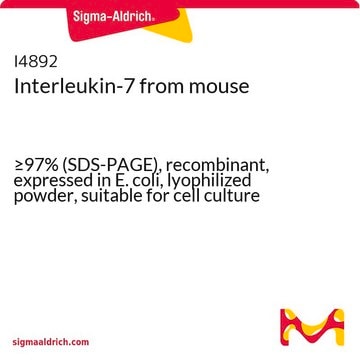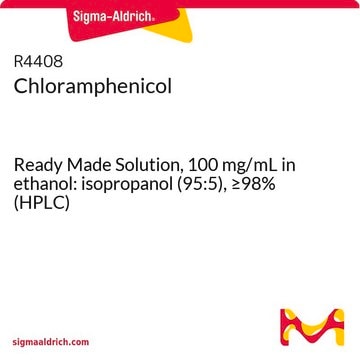K0254
Kanamycin solution from Streptomyces kanamyceticus
liquid, suitable for cell culture and plant cell culture, BioReagent
Synonym(s):
Kanamycin A
About This Item
Recommended Products
product name
Kanamycin solution from Streptomyces kanamyceticus, 50 - 60 mg/mL in 0.9% NaCl, BioReagent, liquid, 0.1 μm filtered, suitable for cell culture
biological source
Streptomyces kanamyceticus
sterility
0.1 μm filtered
product line
BioReagent
form
liquid
concentration
50 - 60 mg/mL in 0.9% NaCl
technique(s)
cell culture | mammalian: suitable
cell culture | plant: suitable
impurities
endotoxin, tested
antibiotic activity spectrum
Gram-negative bacteria
Gram-positive bacteria
mycobacteria
mycoplasma
mode of action
protein synthesis | interferes
storage temp.
2-8°C
SMILES string
NC[C@H]1O[C@H](O[C@@H]2[C@@H](N)C[C@@H](N)[C@H](O[C@H]3O[C@H](CO)[C@@H](O)[C@H](N)[C@H]3O)[C@H]2O)[C@H](O)[C@@H](O)[C@@H]1O
InChI
1S/C18H36N4O11/c19-2-6-10(25)12(27)13(28)18(30-6)33-16-5(21)1-4(20)15(14(16)29)32-17-11(26)8(22)9(24)7(3-23)31-17/h4-18,23-29H,1-3,19-22H2/t4-,5+,6-,7-,8+,9-,10-,11-,12+,13-,14-,15+,16-,17-,18-/m1/s1
InChI key
SBUJHOSQTJFQJX-NOAMYHISSA-N
Looking for similar products? Visit Product Comparison Guide
General description
Application
- to induce deafness in neonatal rats
- as an endothelial growth medium component for culturing human umbilical vein endothelial cells (HUVECs)
- as medium component for Mycobacteria Cultures and Top10 E coli cells
Biochem/physiol Actions
Mode of Resistance: Aminoglycoside-modifying enzymes (including acetyltransferase, phosphotransferase, nucleotidyltransferase) can alter this antibiotic, preventing its interaction with ribosomes.
Antimicrobial spectrum: Kanamycin sulfate is effective against gram-negative and gram-postiive bacteria, and mycoplasma.
Caution
signalword
Danger
hcodes
pcodes
Hazard Classifications
Repr. 1B
Storage Class
6.1C - Combustible acute toxic Cat.3 / toxic compounds or compounds which causing chronic effects
wgk_germany
WGK 2
flash_point_f
Not applicable
flash_point_c
Not applicable
Certificates of Analysis (COA)
Search for Certificates of Analysis (COA) by entering the products Lot/Batch Number. Lot and Batch Numbers can be found on a product’s label following the words ‘Lot’ or ‘Batch’.
Already Own This Product?
Find documentation for the products that you have recently purchased in the Document Library.
Customers Also Viewed
Articles
Antibiotic kill curve is a dose response experiment in which mammalian cells are subjected to increasing amounts of selection antibiotic
Our team of scientists has experience in all areas of research including Life Science, Material Science, Chemical Synthesis, Chromatography, Analytical and many others.
Contact Technical Service






